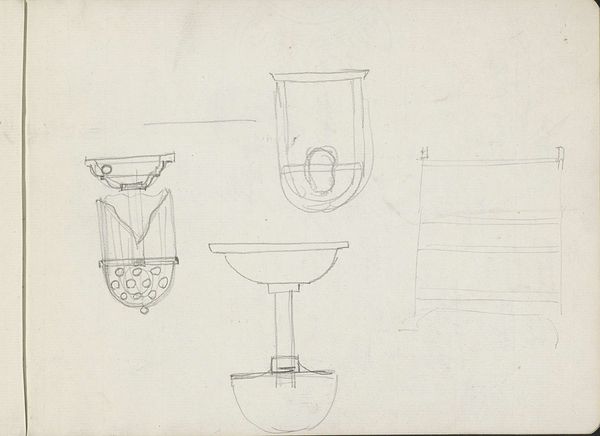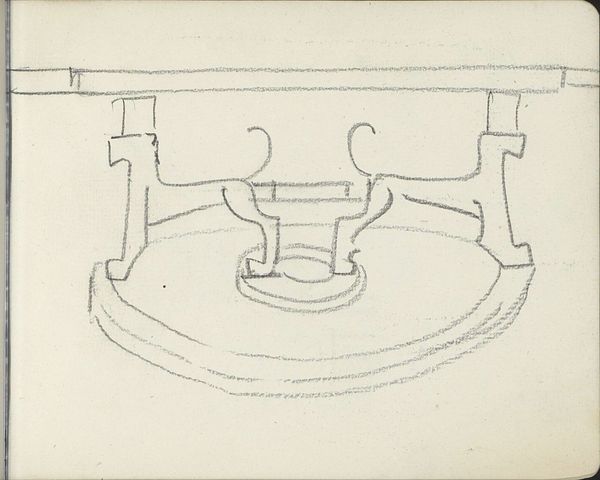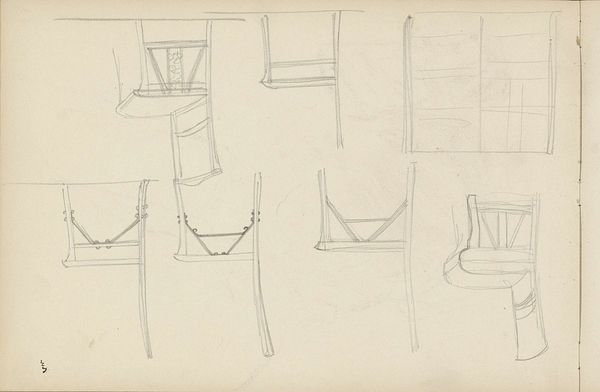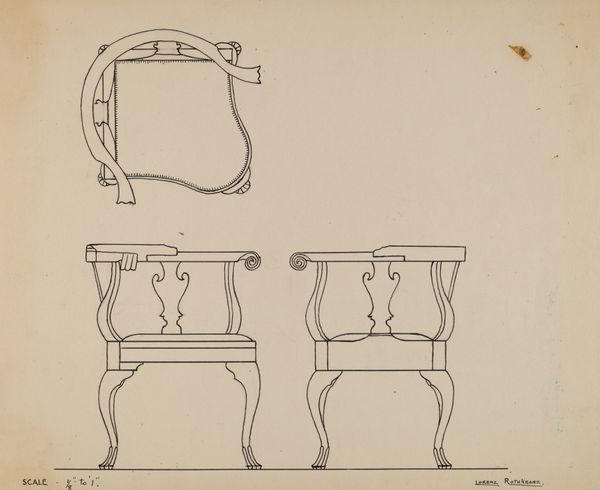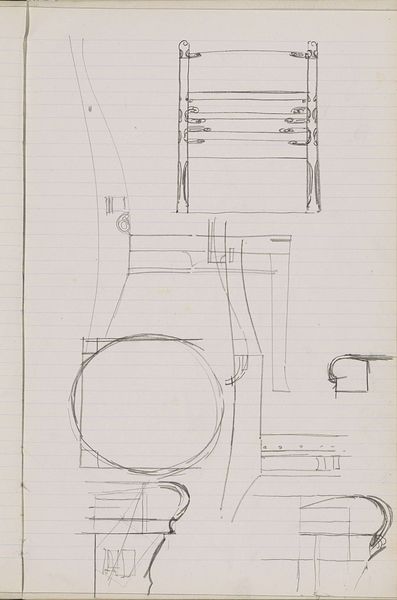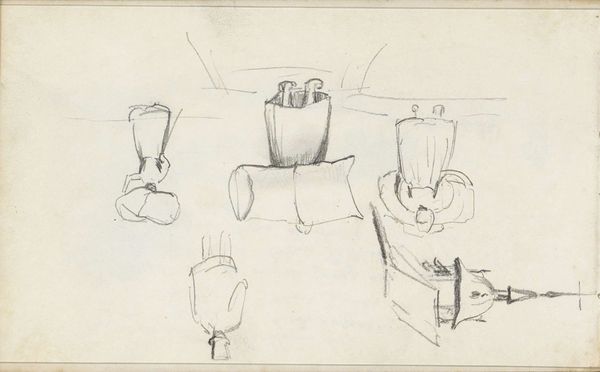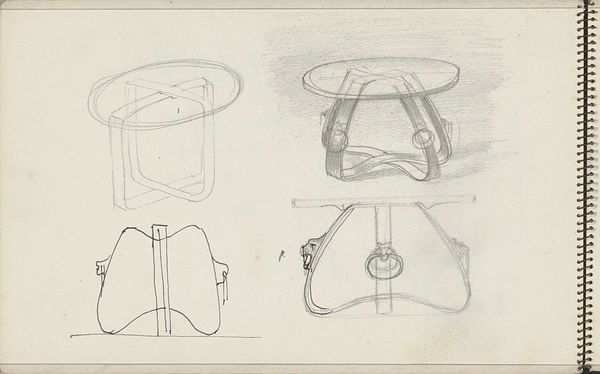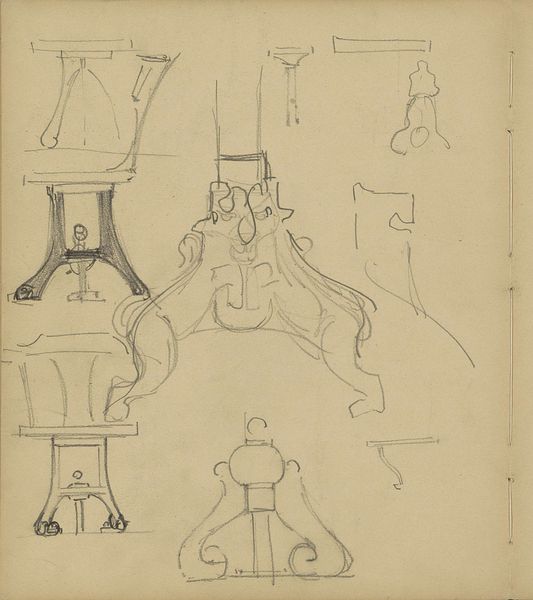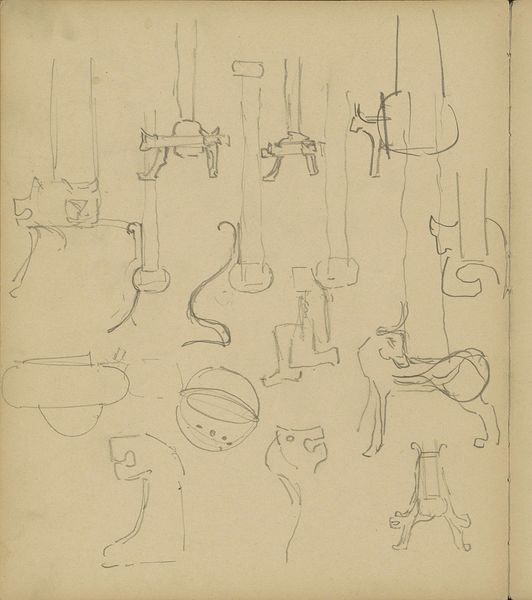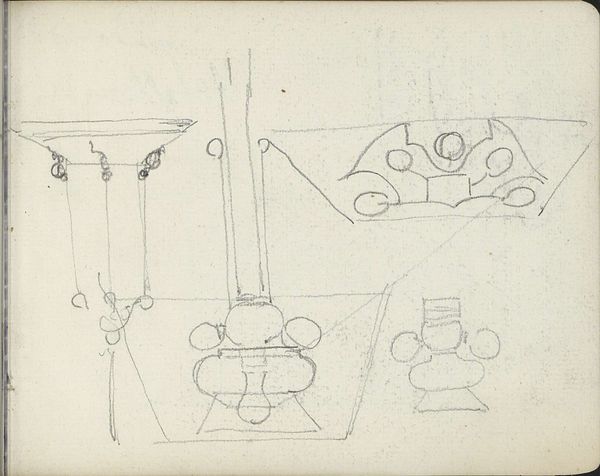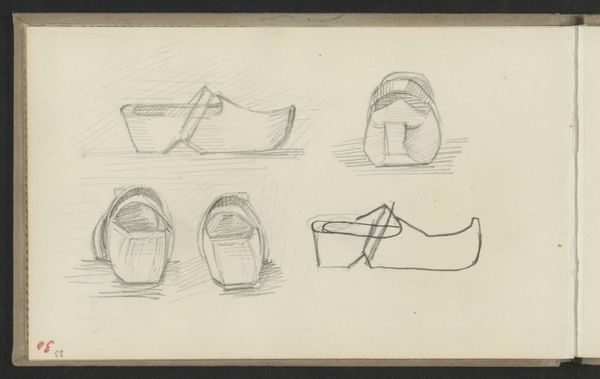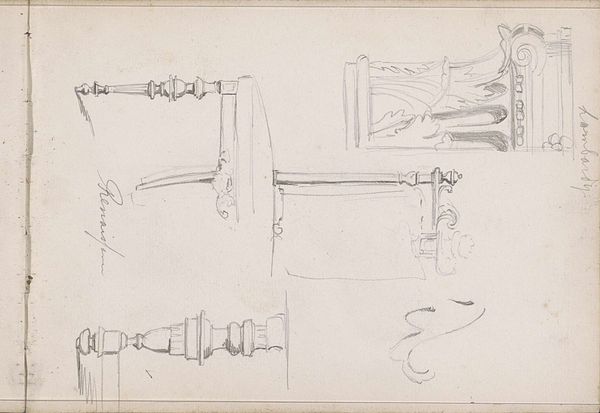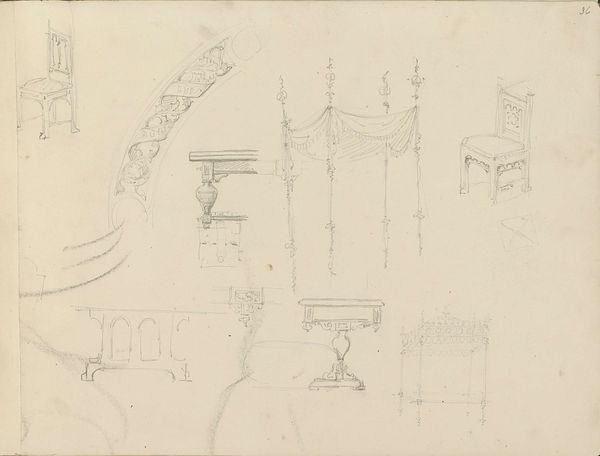
drawing, paper, pencil
#
drawing
#
art-nouveau
#
paper
#
geometric
#
pencil
Copyright: Rijks Museum: Open Domain
Curator: Here we have "Ontwerpen voor lampen," or Designs for Lamps, a drawing by Carel Adolph Lion Cachet, created around 1905 to 1910. Editor: There's a lovely, almost delicate quality to these sketches. They seem more like studies in light itself, rather than just representations of lamp fixtures. Curator: Precisely. Cachet was working within the Art Nouveau movement, a style deeply influenced by organic forms, as you can clearly observe. These are initial drawings made with pencil on paper. Thinking about Art Nouveau as a rejection of industrial production, it's intriguing to see designs for manufactured goods rendered with such care. How was his craftsmanship received? Editor: These sketches challenge the very definition of “high art” by applying artistic skill to functional objects. It’s essential to consider the cultural context: electric lighting was becoming more prevalent, yet handcrafted designs still held a certain status. Who were his target consumers? The wealthy who wanted artful household items? Curator: His social network certainly involved individuals commissioning pieces for private estates, thus speaking to exclusive consumption. Also, consider the politics of illumination at the time. Electricity symbolized progress, modernization and even hygiene; it moved art out of churches and castles into common society. Editor: Good point. These aren't just light sources; they are status symbols wrapped up in larger socio-political ideas. It seems as if the very process and methods that made it possible reflected the zeitgeist. These geometric but fluid lamp renderings illustrate that paradox clearly. Curator: Looking closely at the marks on the paper reminds me how different mass production methods are, in contrast, how Cachet was emphasizing craftsmanship with bespoke work. Editor: Definitely! Reflecting on these “Designs for Lamps” reveals layers of insight: social context, artistic practice, and shifting perceptions toward production. This piece provides a window onto complex socio-economic narratives woven through the art and industry of early 20th-century culture.
Comments
No comments
Be the first to comment and join the conversation on the ultimate creative platform.
